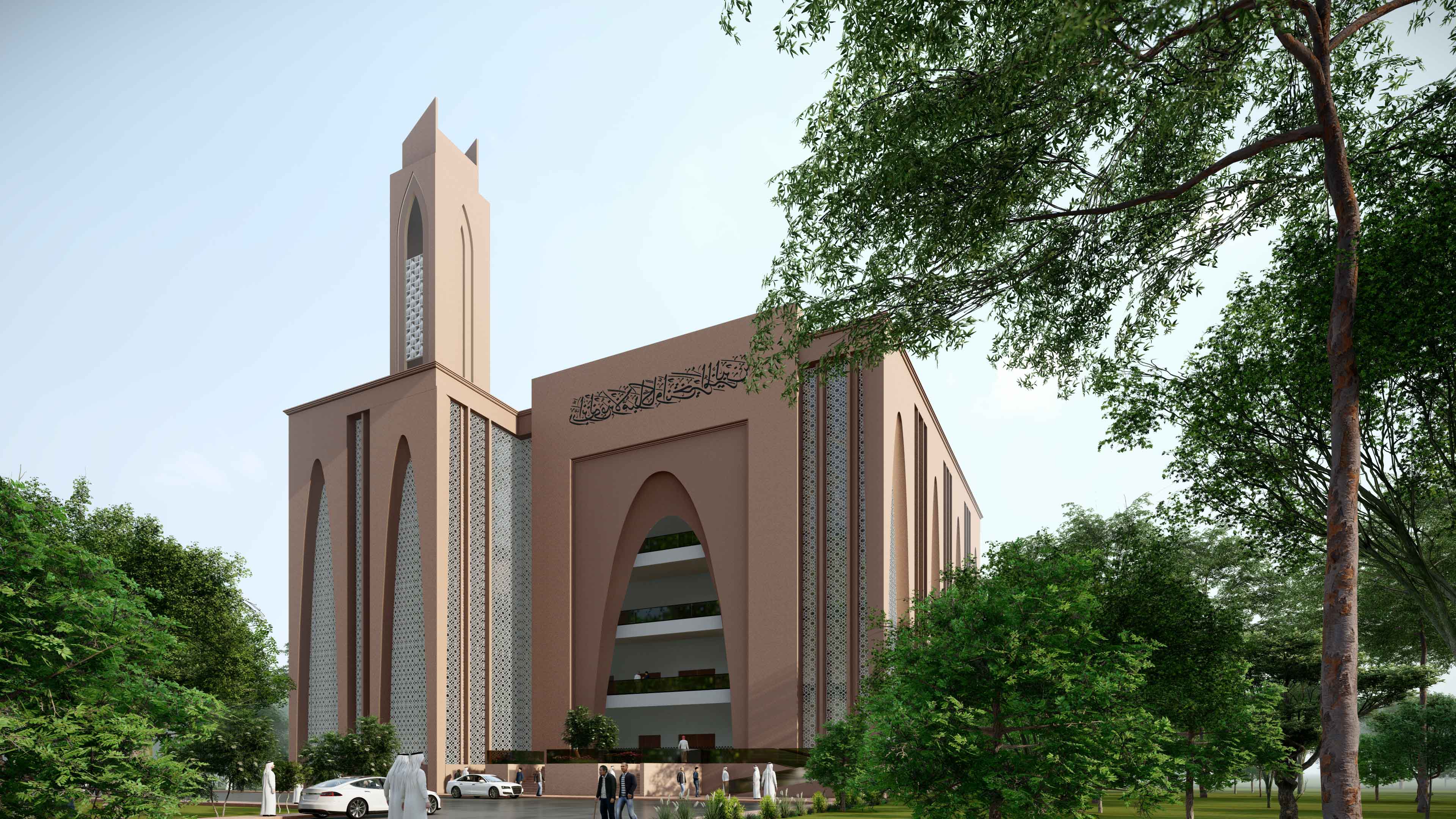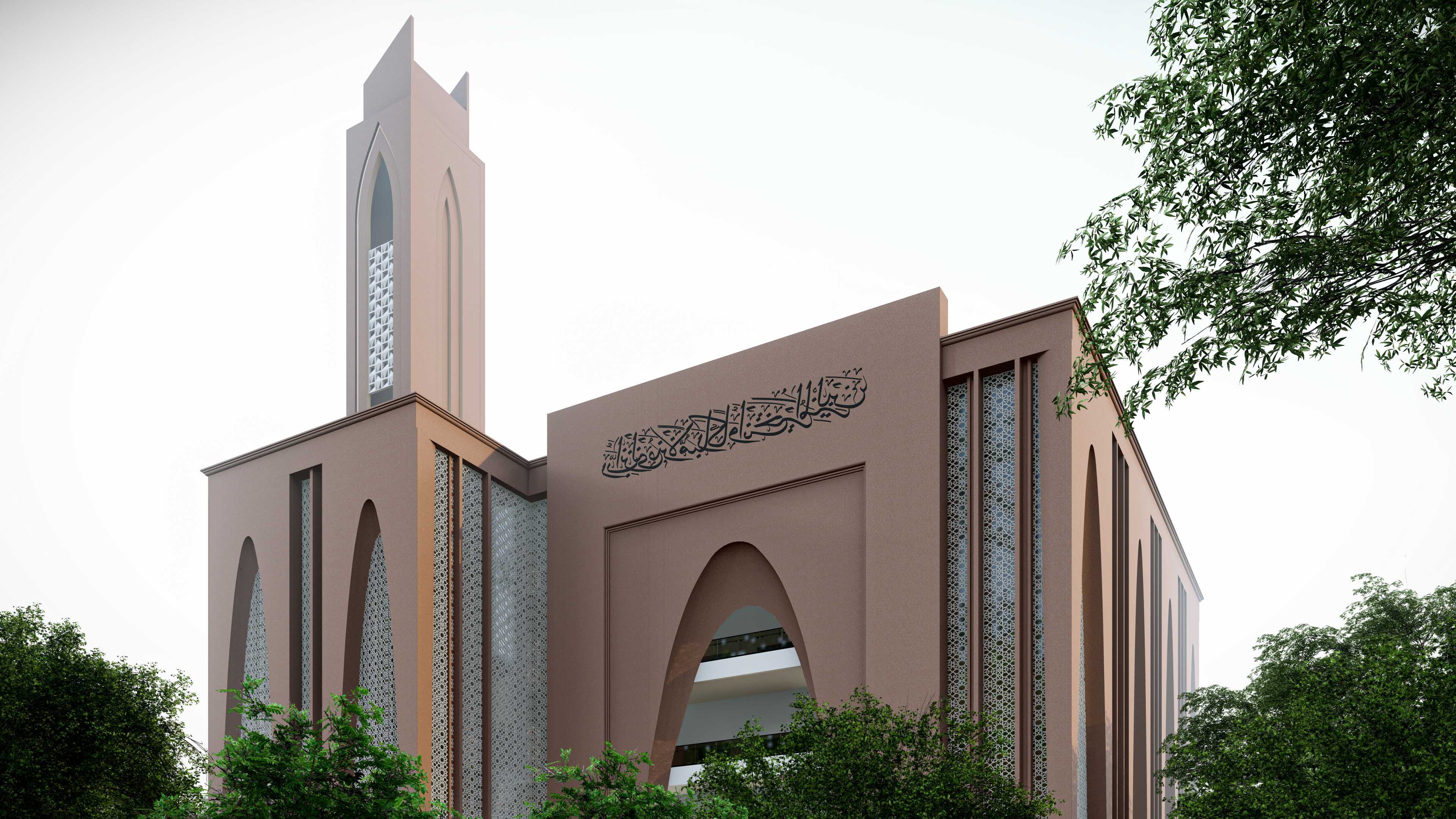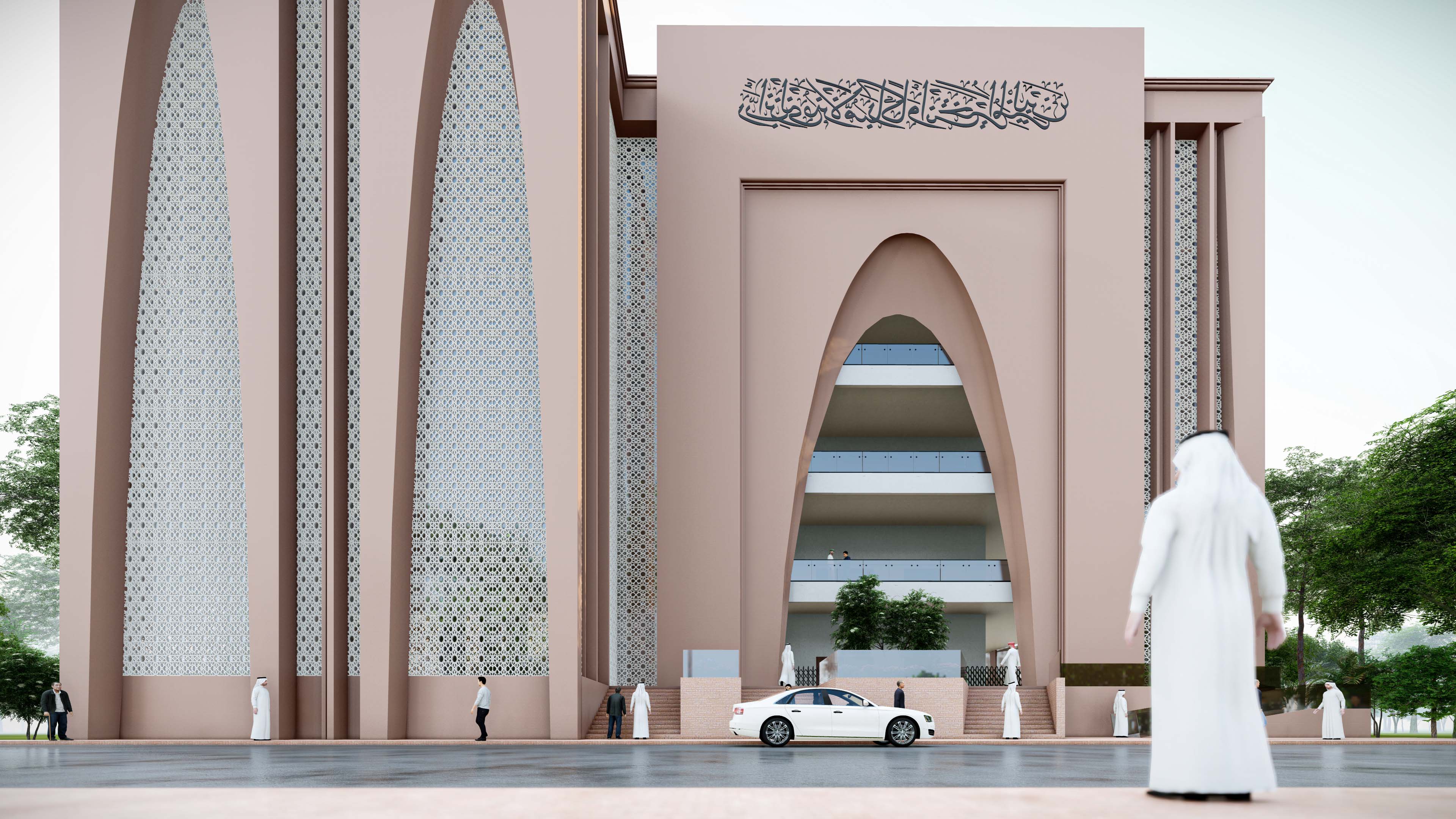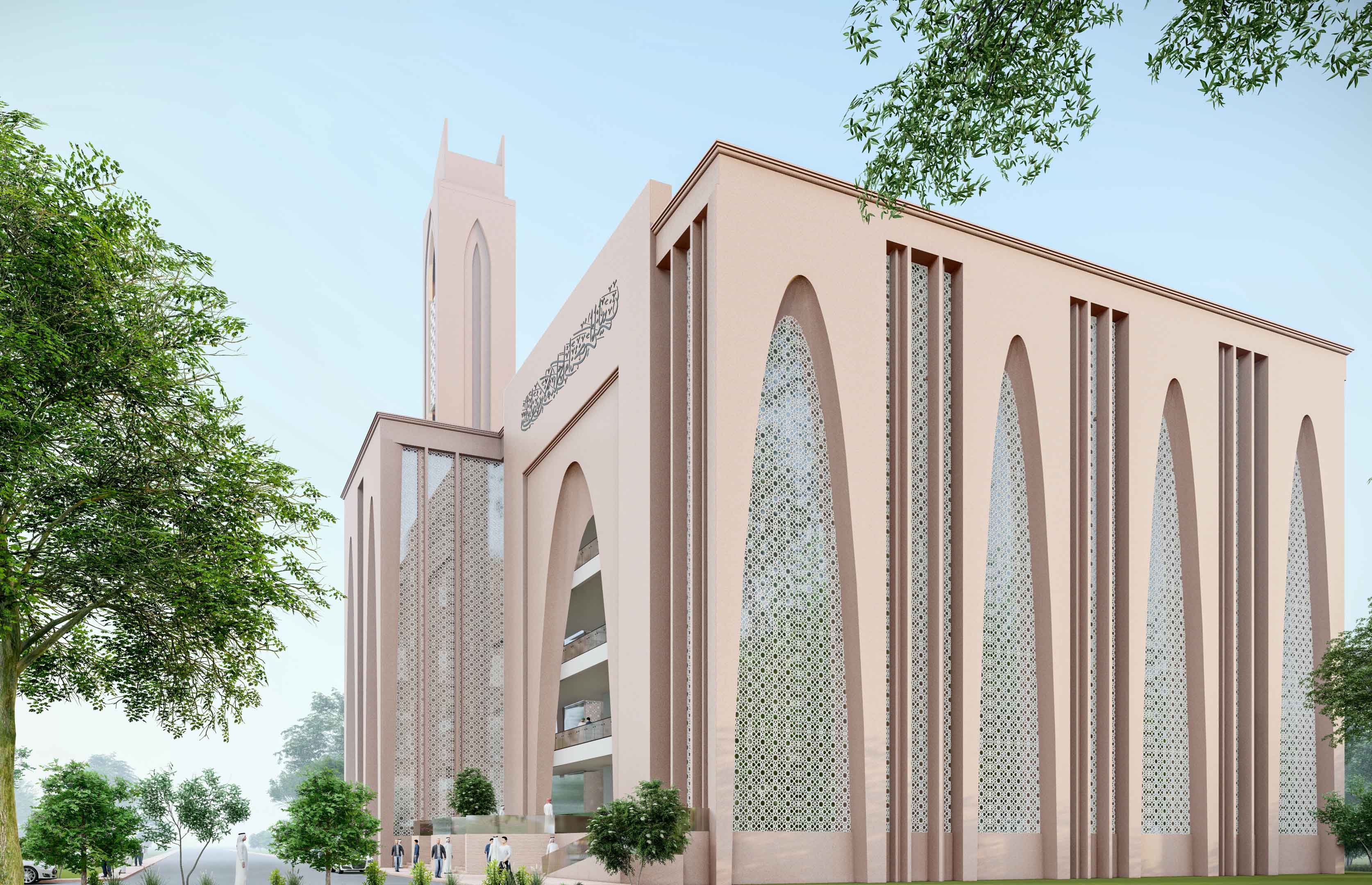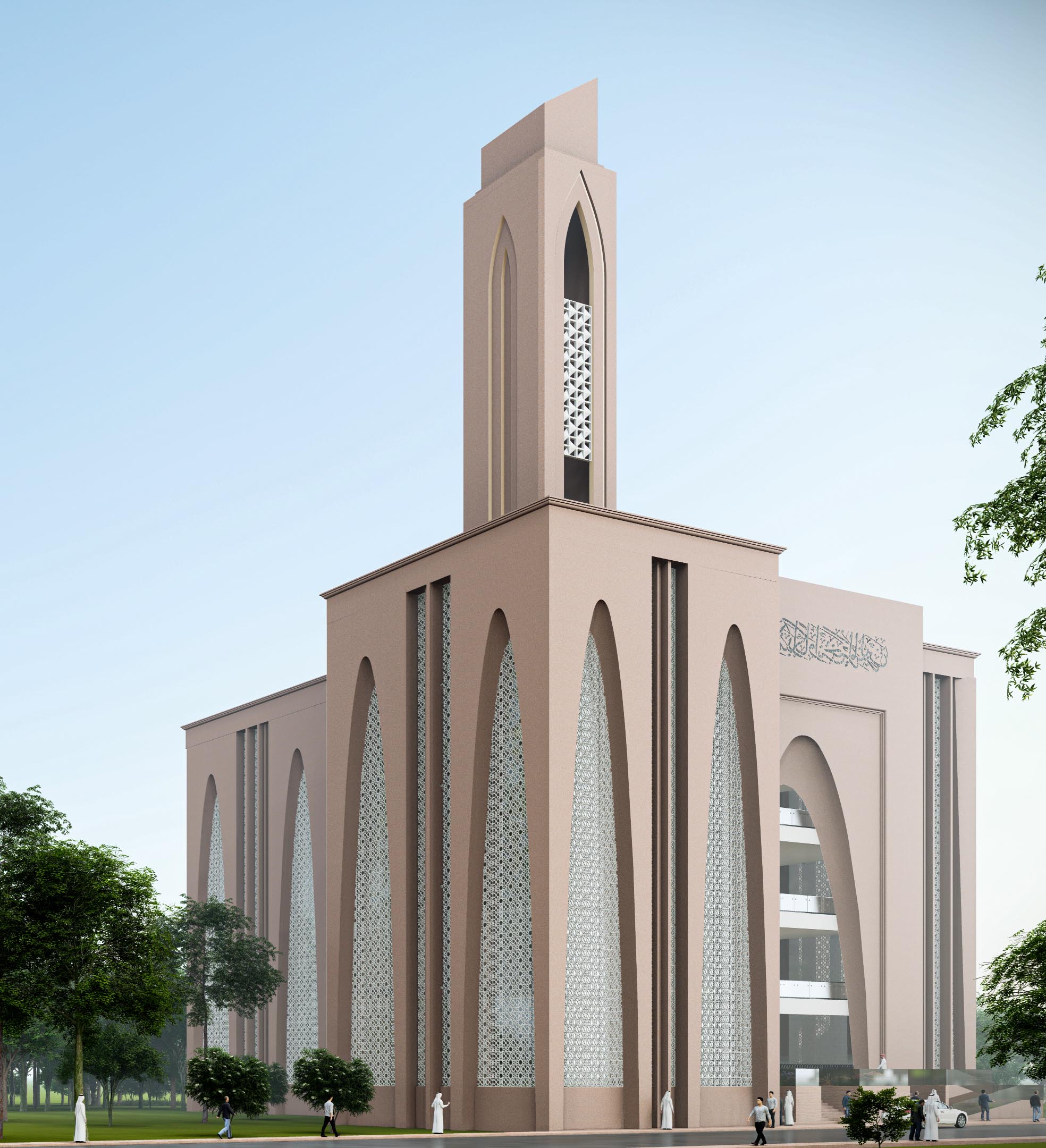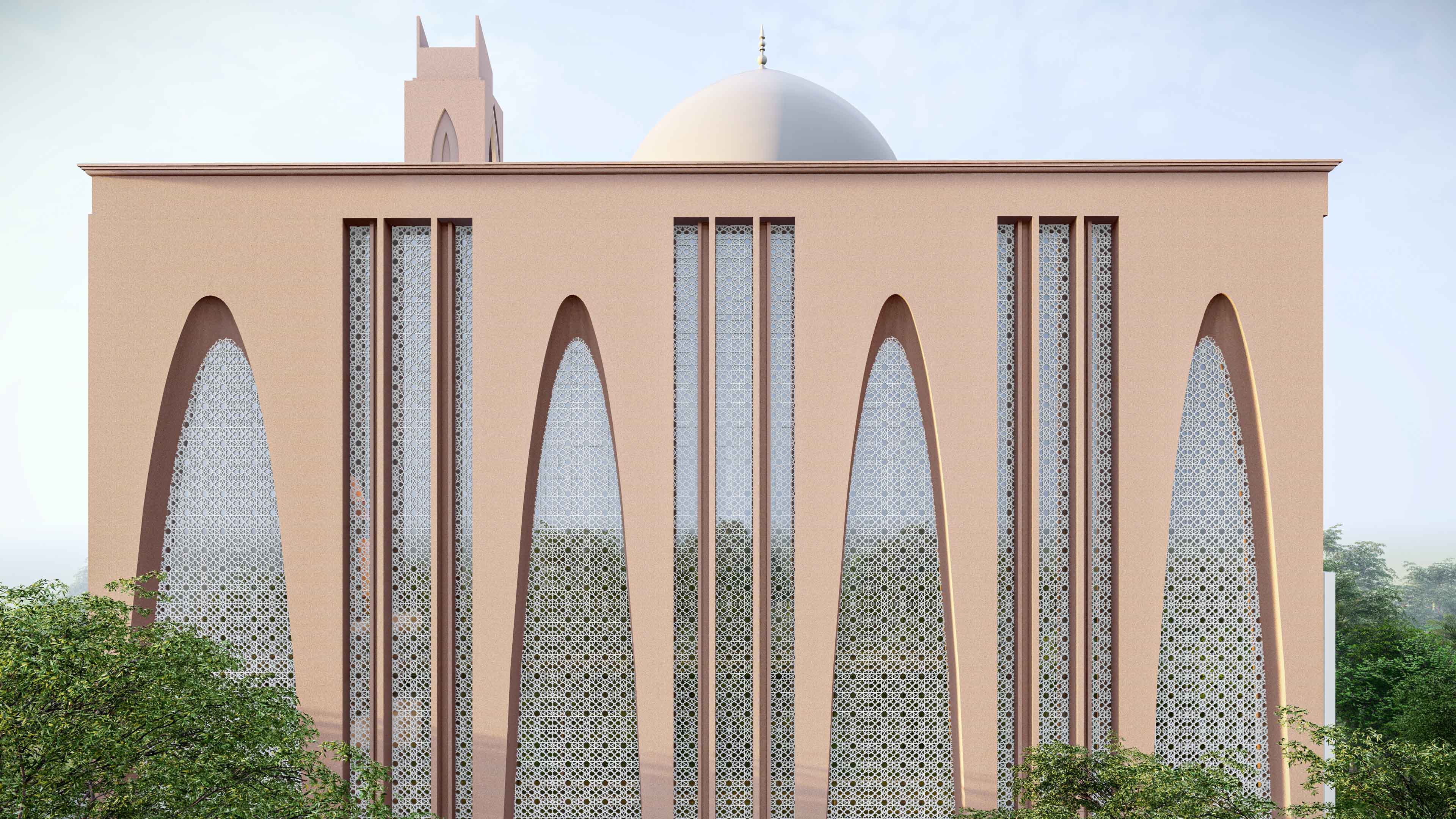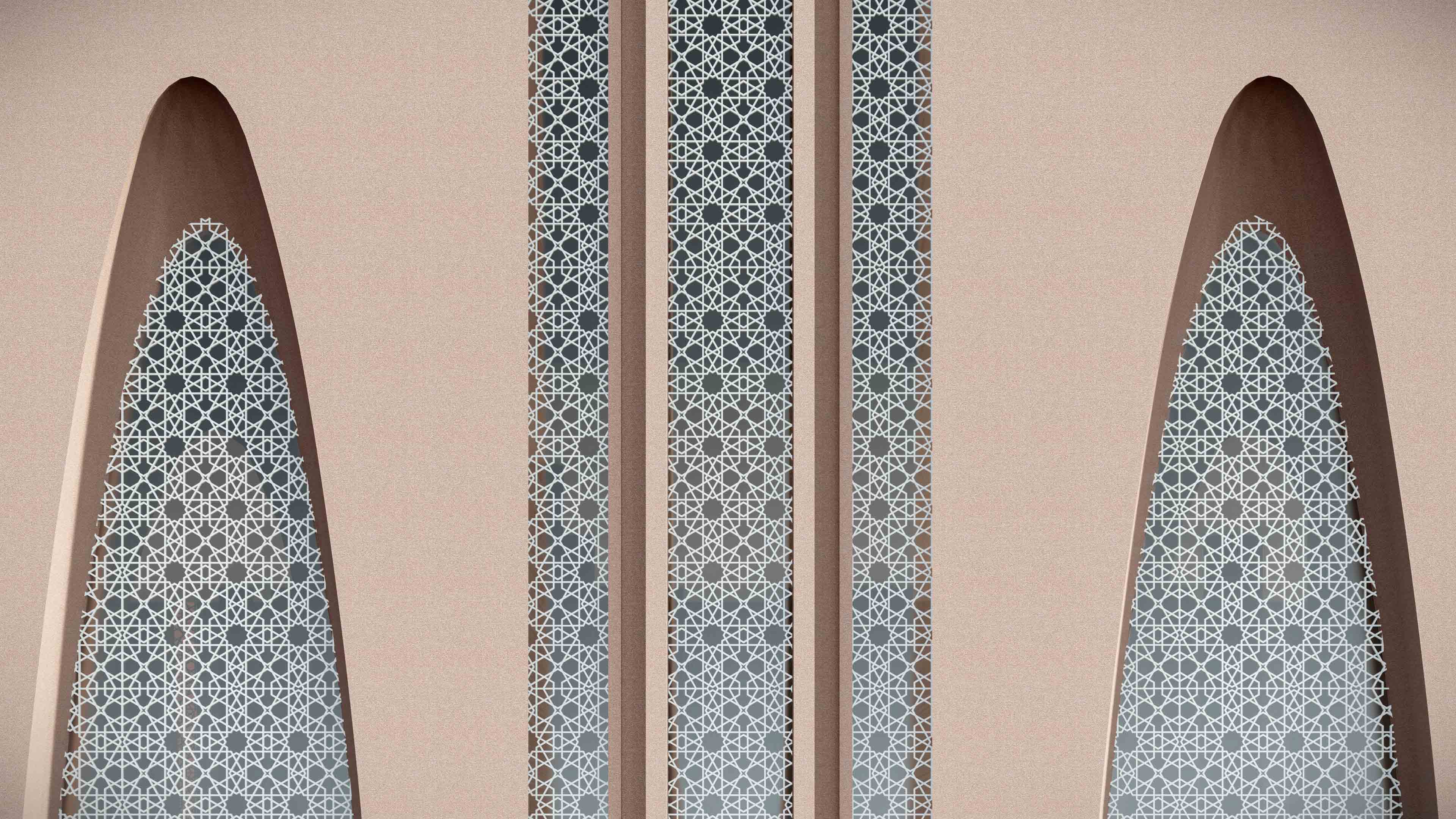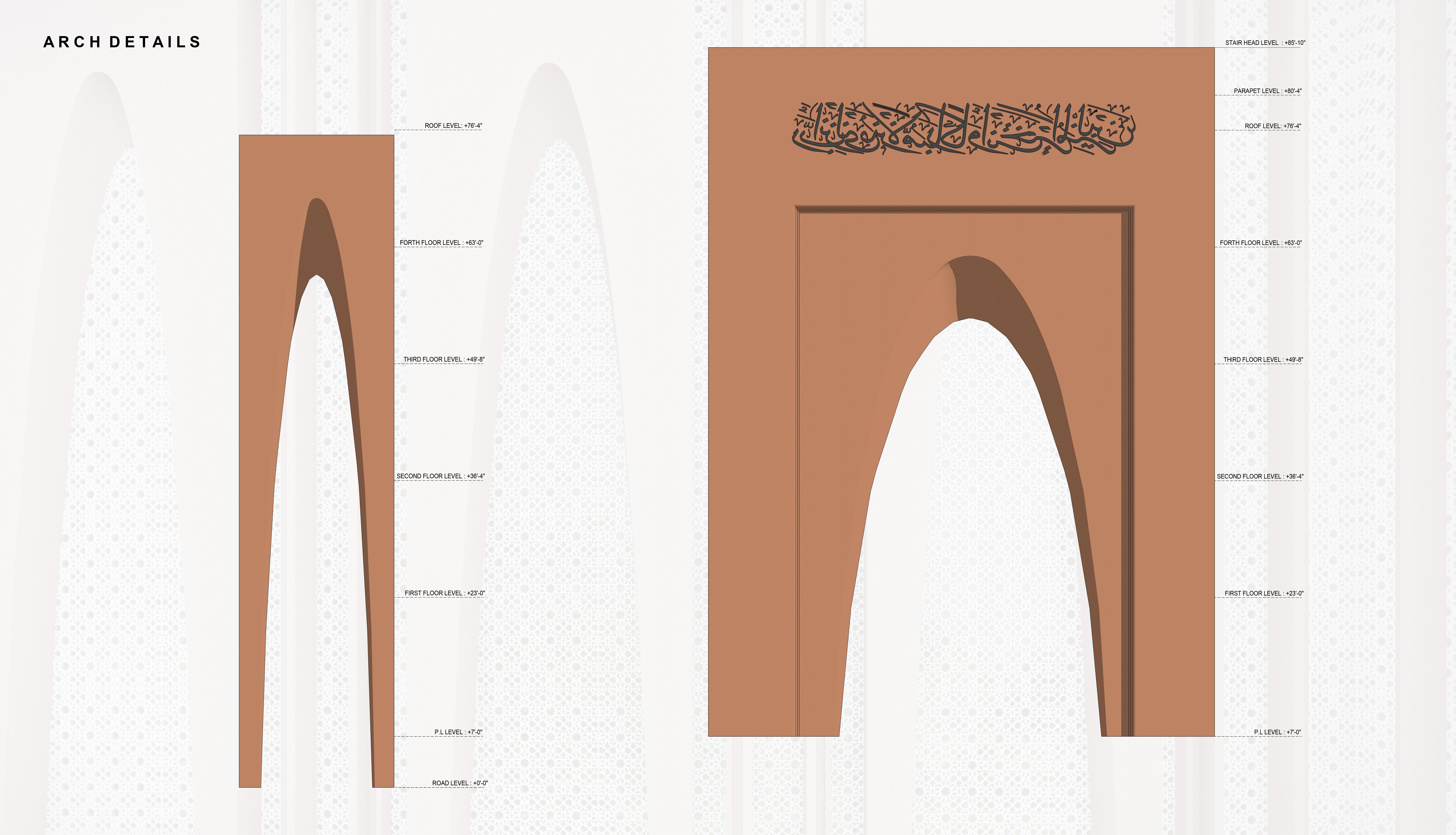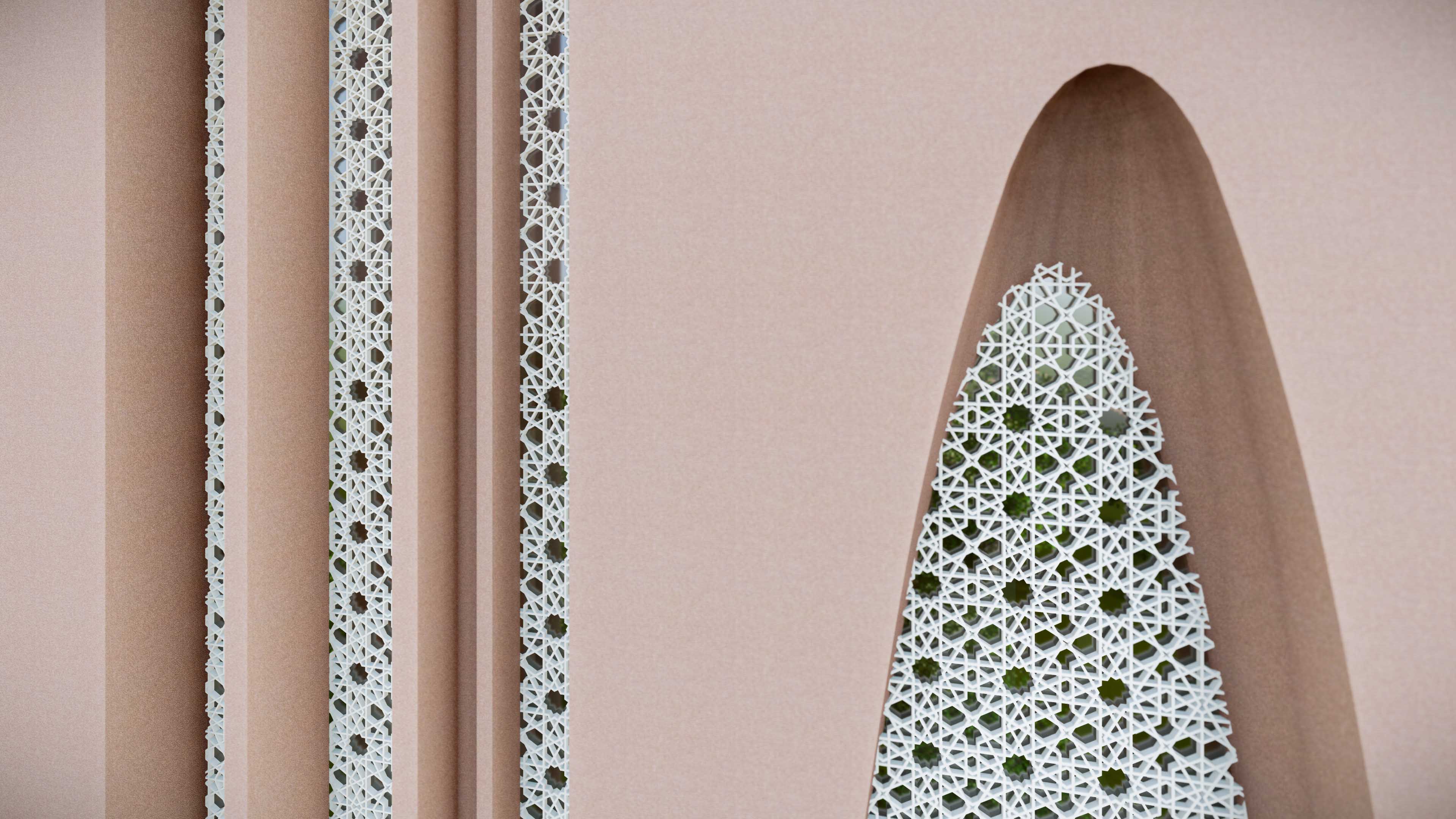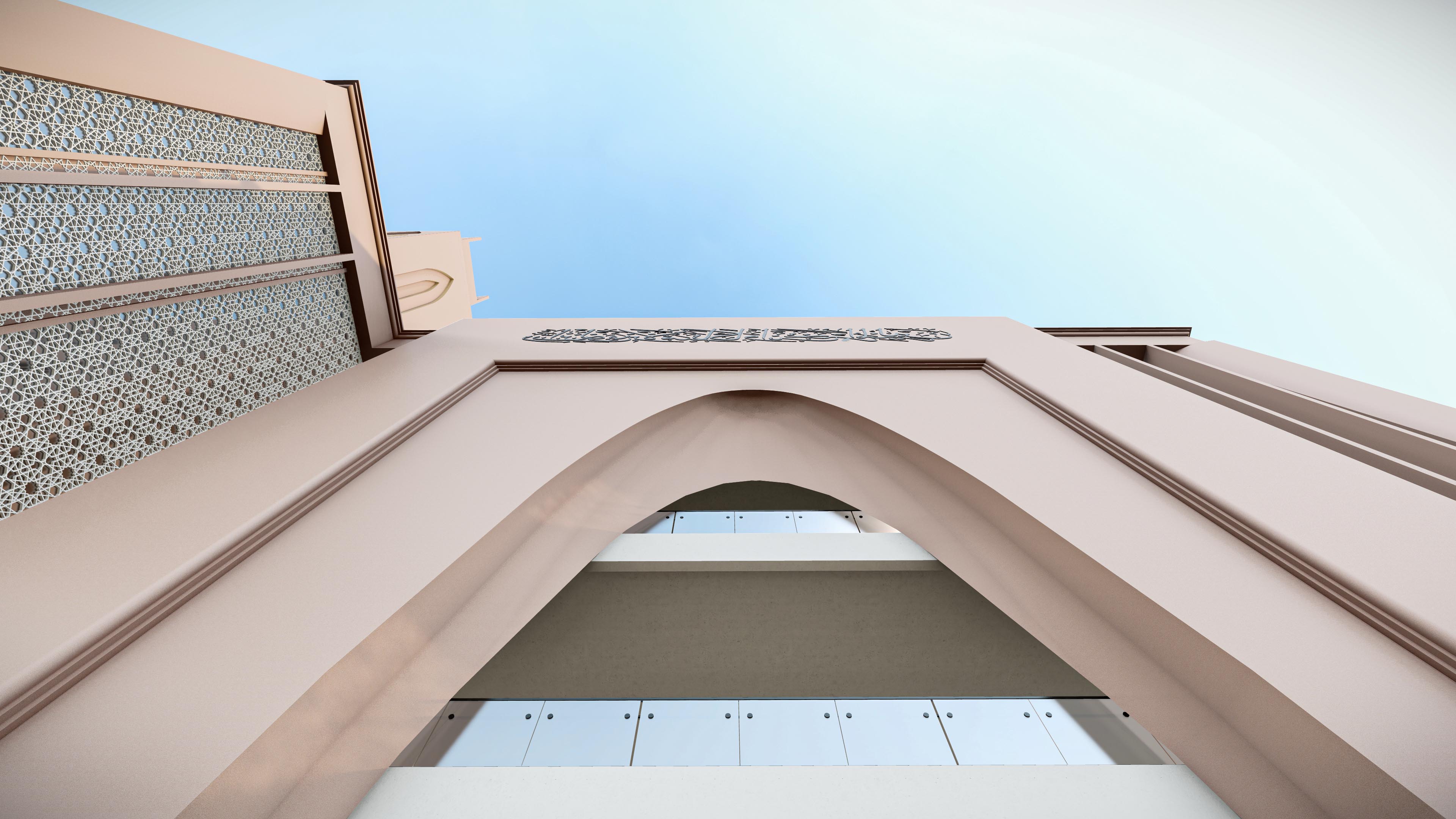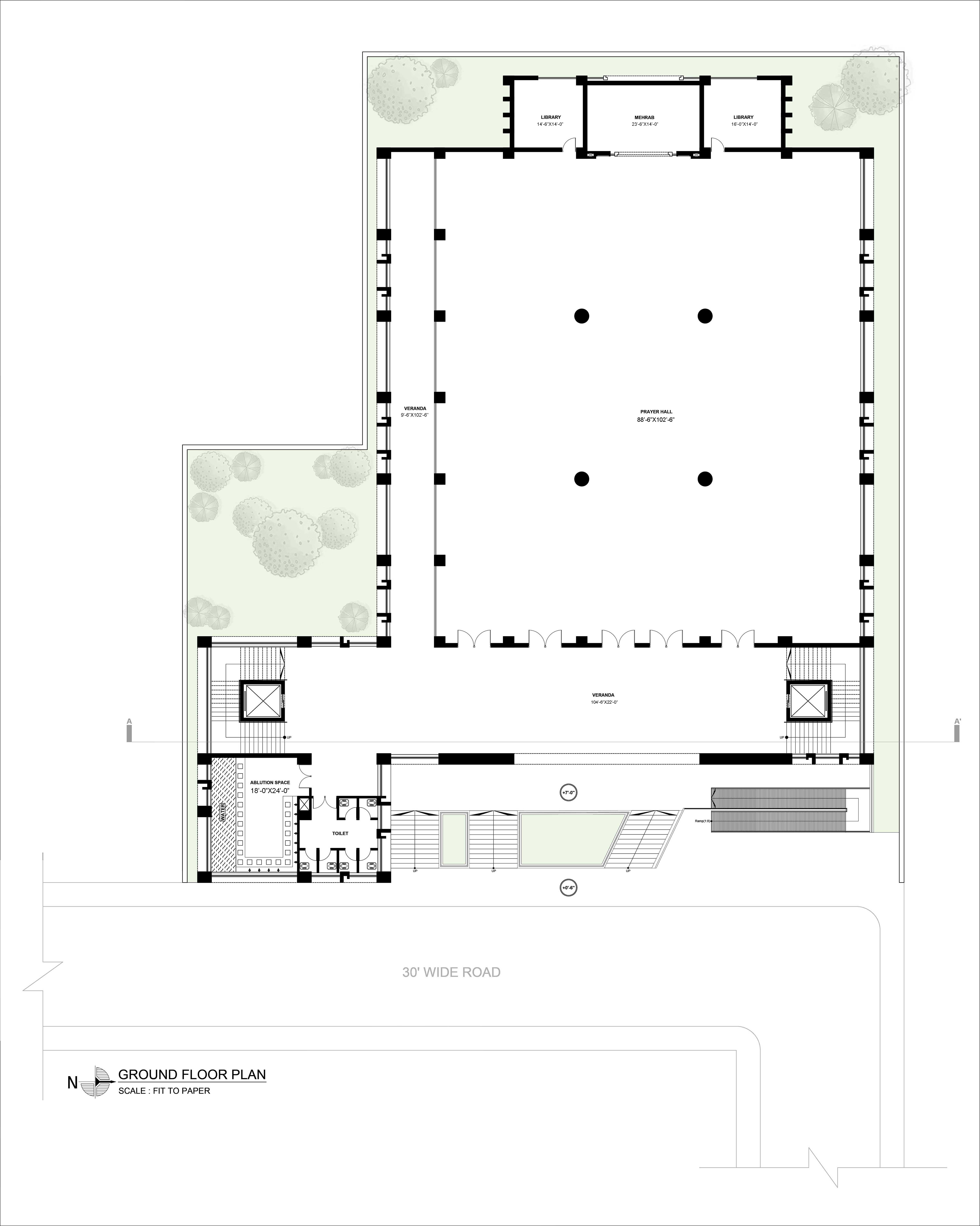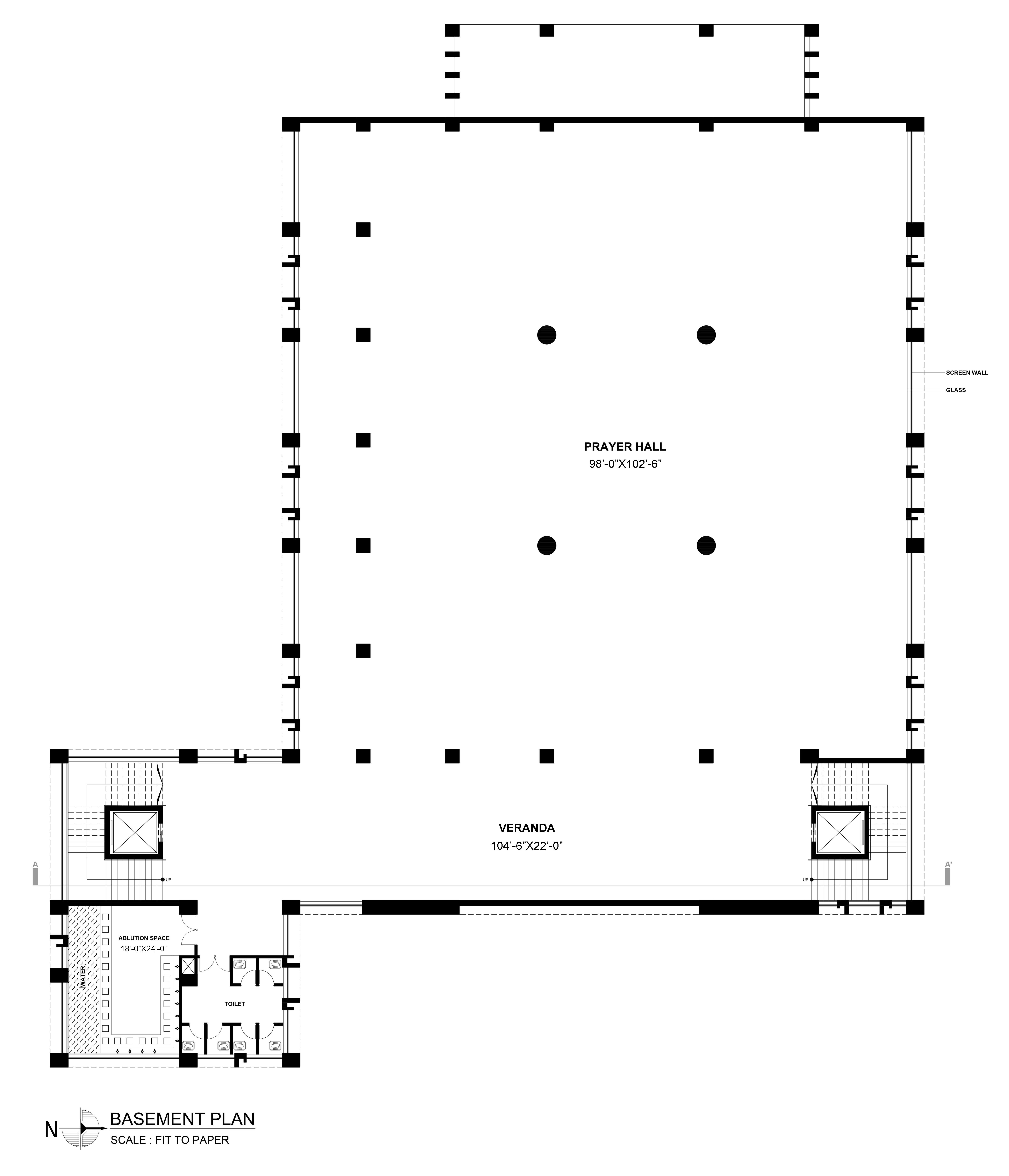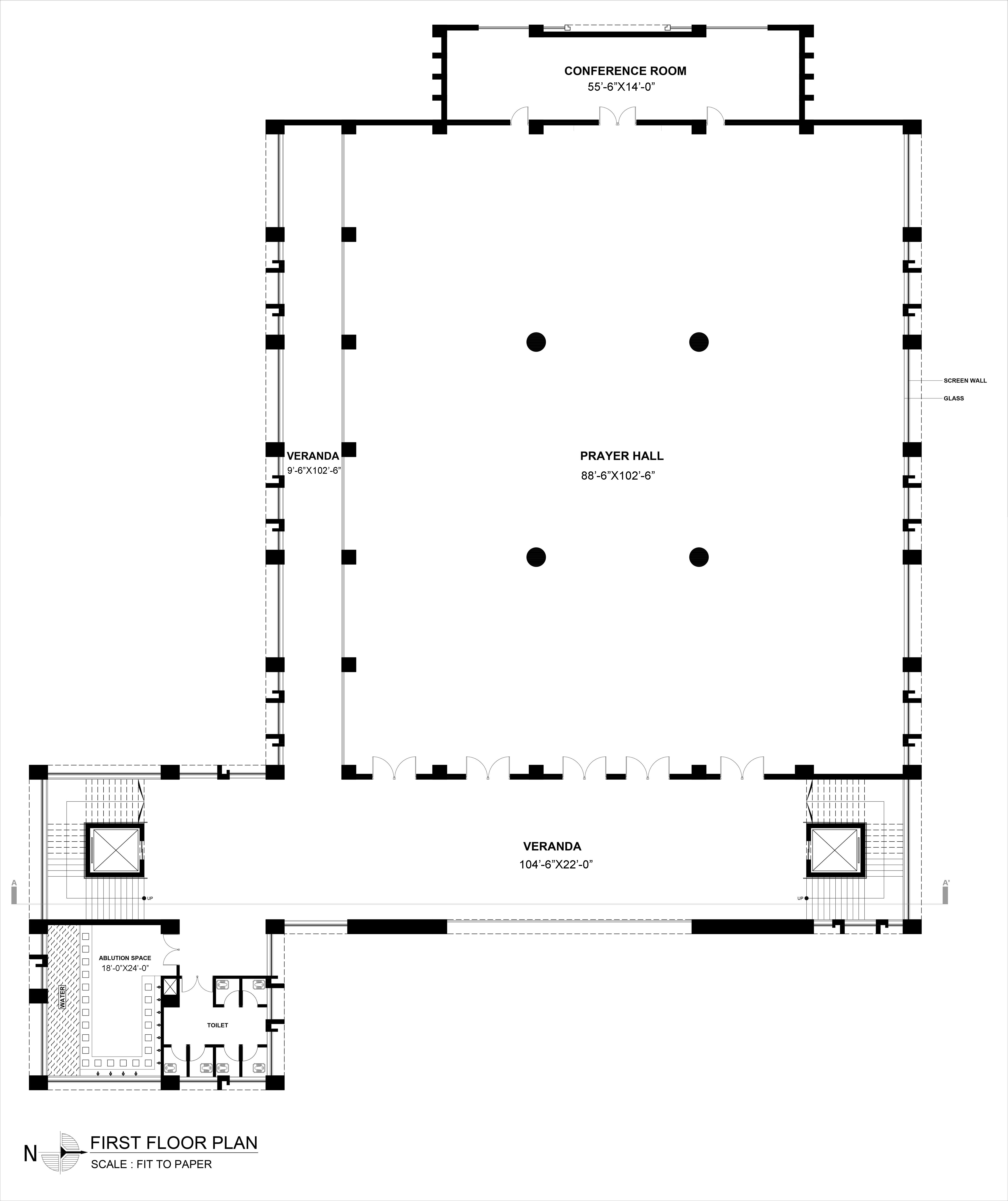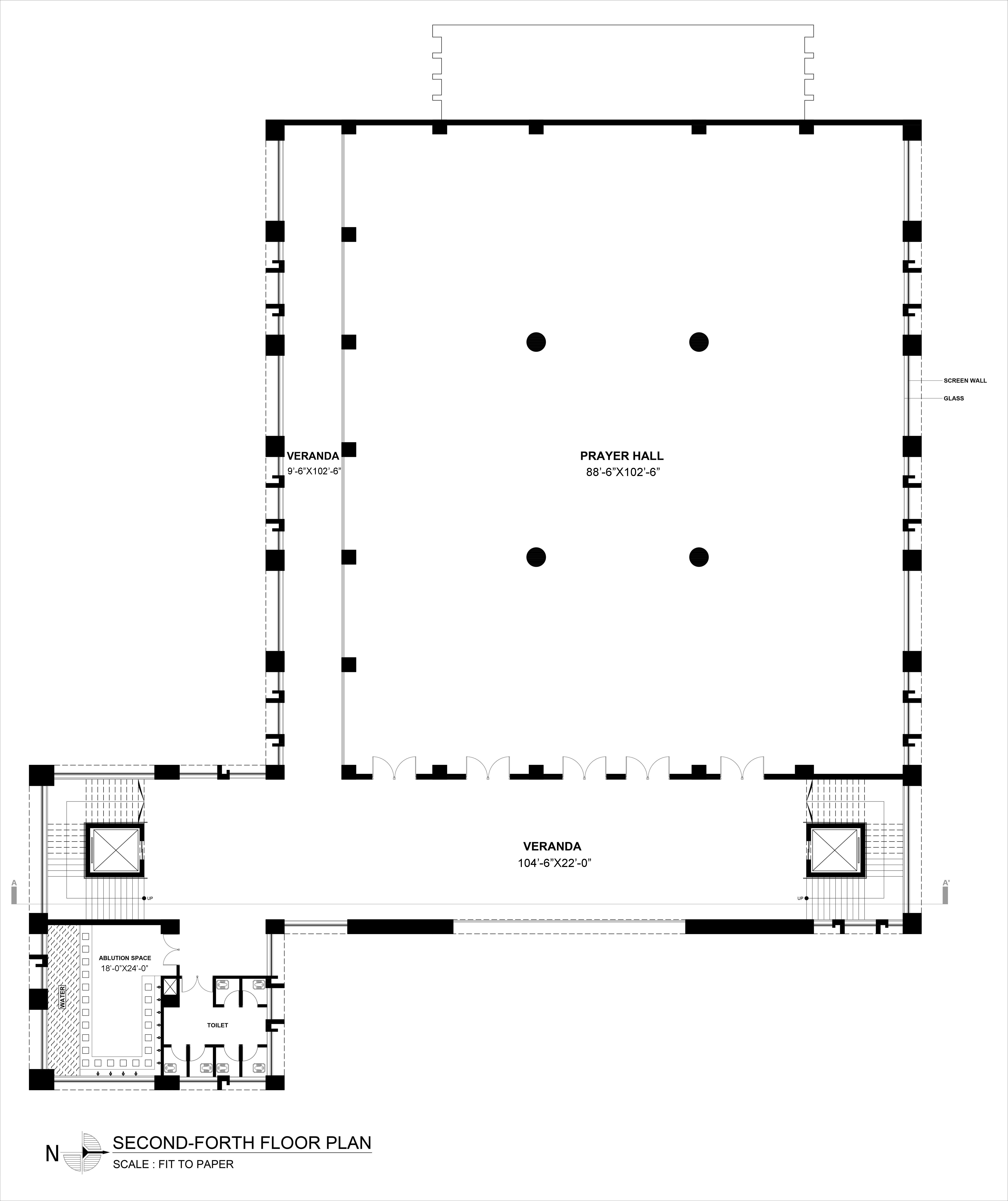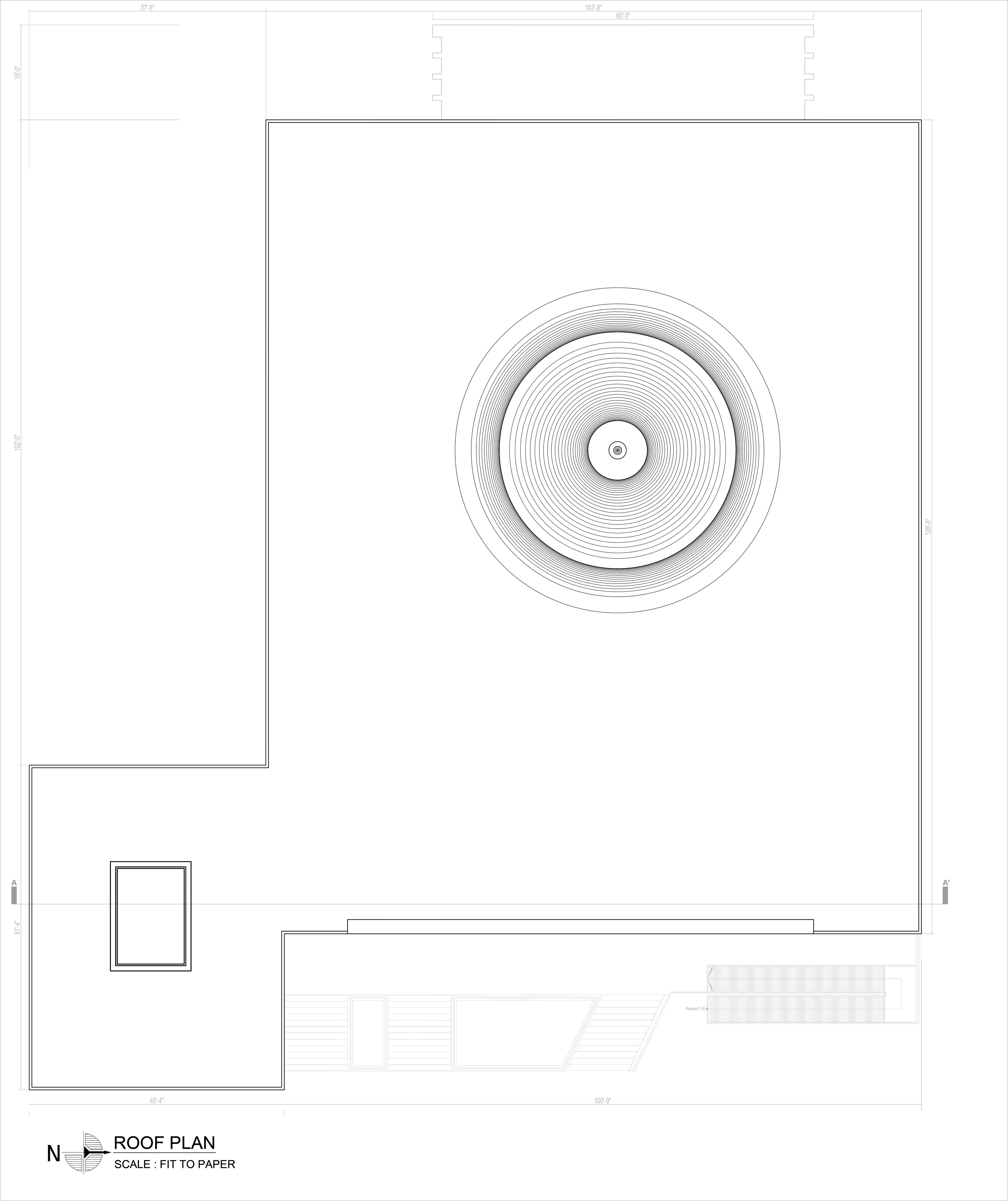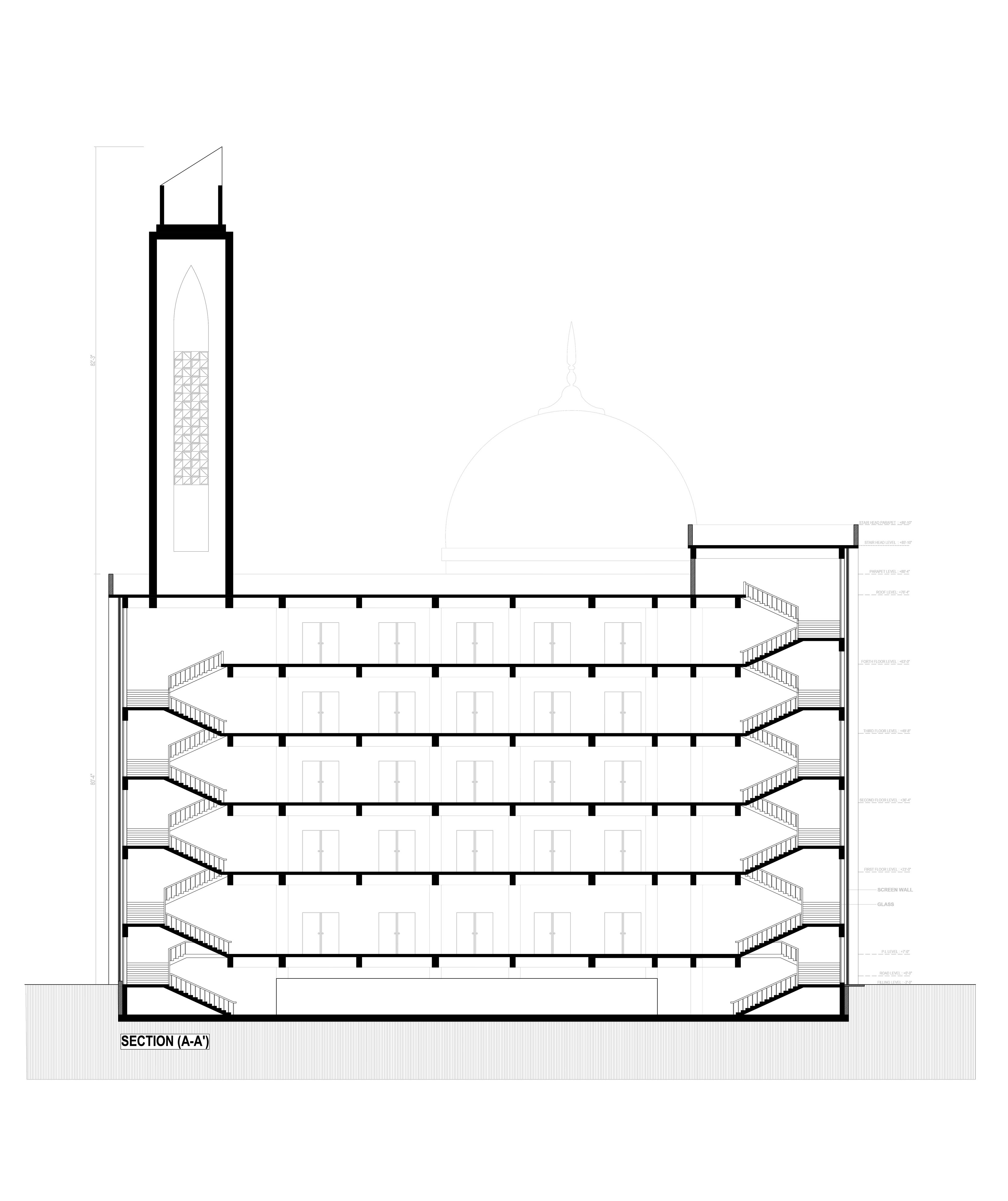The design of ‘Rabbania Mosque’ draws inspiration from the timeless relationship between Islamic architecture and the metaphysical. At its heart lies the pointed arch—a historic Islamic form used to evoke elevation, spiritual aspiration, and the sacred journey toward the divine. These arches, used dramatically on all elevations, form a rhythm that guides both the eye and the soul upward, allowing the worshipper to feel suspended between earth and heaven. This mosque is not merely a structure—it is a symbolic passage that frames faith, space, and light into one cohesive spiritual experience.
